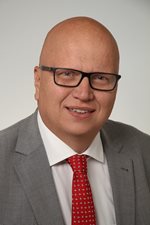Which topics have received the largest number of abstracts?
The largest number of abstracts that have been received in the brachytherapy track concern the area of gynaecology; the second-highest number covers physics.
Can we expect reports of a lot of clinical trials?
There are not many prospective trials in the field of brachytherapy. At the meeting, among various trials and analyses, reports on three are expected to be especially interesting: the five-year results of the GEC-ESTRO phase I-II trial on very accelerated partial breast irradiation; a prospective phase-II study on dose escalated radiotherapy and organ preservation in rectal cancers; and the results of an international multicentre International Atomic Energy Agency/World Health Organization pilot audit of dosimetry for high-dose-rate brachytherapy.
Can you highlight recent advancements in brachytherapy that have significantly impacted clinical practice, and how will these be addressed at ESTRO 2024?
There are many important trends in brachytherapy, which will be presented at ESTRO 2024. They include brachytherapy as a “condition sine qua non” ‑ a therapeutic modality for nearly all patients with gynaecological cancer and prostate carcinoma; the increasing importance of risk-adapted personalised brachytherapy for patients with breast, head & neck and gastrointestinal tumours; new horizons offered by the use of deep-learning auto-segmentation and artificial intelligence (AI)-based brachytherapy planning in clinical practice; and the role of functional imaging in brachytherapy.
Are there specific sessions or presentations in the brachytherapy track that you believe will be particularly informative for attendees, and why?
It´s difficult to choose. In the session “Breast and prostate brachytherapy”, the audience will hear new results regarding dose escalation with brachytherapy in breast and prostate cancer and the possibilities of electromagnetic tracking for quality assurance. In the session “Gastrointestinal, head & neck and eye brachytherapy”, the possibilities of minimising possible side effects and of organ and function-sparing treatment schedules with brachytherapy will be presented and analysed.
In the session “Brachytherapy for gynaecological cancers”, the audience will be informed about the potential of brachytherapy in the treatment of recurrent gynaecological tumours, the possibilities of fractionation and of autoplanning in cervical cancer brachytherapy. Finally, in the session named “Physics”, issues such as “Deep learning auto-segmentation for cervix brachytherapy”, “AI-based brachytherapy planning” and “Automated treatment planning for brachytherapy” are likely to dominate this session.
How can the brachytherapy community contribute to addressing disparities in access to radiation therapy, especially in the context of the congress theme, "Radiation Oncology: Bridging the Care Gap"?
It´s well-known that brachytherapy is an indispensable technique of radiation oncology that enables extremely precise treatment of large numbers of tumours. During ESTRO 2024, physicians can become familiar with the excellent results of modern brachytherapy treatment at various symposia and teaching courses. The brachytherapy community's central contribution to addressing inequities in access to radiation therapy is in the field of gynaecological brachytherapy. We believe that one of the most important ways this can be achieved is through offering free, non-profit, state-of-the-art training of physicians and physicists in low-income countries that have a high burden of cervical cancer. This issue will be presented in an interdisciplinary session.

Vratislav Strnad
chair of the ESTRO 2024 brachytherapy track
Dept. of Radiation Oncology, University Erlangen-Nürnberg, Germany.